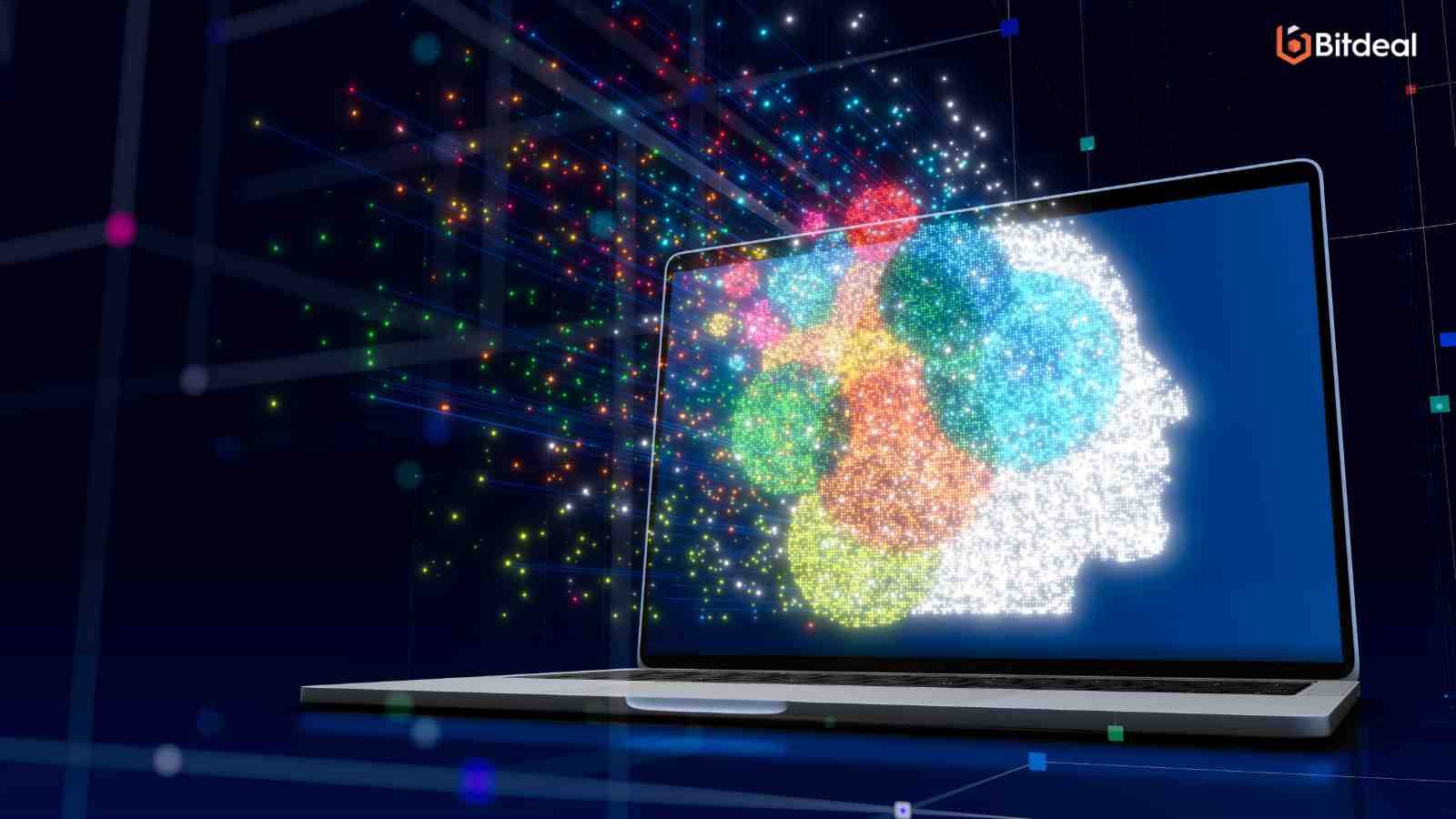Blog | AI Solutions
Comprehensive Guide On Generative AI Tech Stack
Join the journey into the future of AI, where Generative AI Tech Stack opens new possibilities for intelligent systems and human-machine collaboration.
- Blogs

Generative ai tech stack

In the dynamic landscape of AI Development, the spotlight is increasingly turning towards Generative AI Tech Stack, and for good reason. This transformative approach initiated by AI Development Company is revolutionizing the field by enabling machines not just to learn from data but to create new and unique content.
As the demand for AI applications goes beyond mere analysis intensifies, the focus on building Generative AI Development becomes paramount. In this blog let’s explore why AI development should pivot towards Generative AI Tech Stack, delving into its capacity to spark creativity, generate authentic content, and usher in a new era of innovation in artificial intelligence.
What Is Generative AI Tech Stack?
A generative AI requires a robust tech stack that probably serves as the backbone for innovation. Bitdeal’s Generative AI Tech Stack is a carefully curated ensemble of cutting-edge technologies, seamlessly woven together to empower creativity. From advanced neural networks to powerful GPUs, our stack forms the nucleus of limitless possibilities. Dive into the world of Generative AI with confidence, knowing that our tech stack is finely tuned for optimal performance.
Experience the synergy of deep learning frameworks, cloud computing infrastructure, and sophisticated algorithms, all converging to redefine what's possible. Embrace the future of AI creativity with our meticulously crafted Generative AI Tech Stack – where innovation meets excellence. Unleash the potential of your projects and ideas, backed by a tech stack that embodies the essence of Generative AI revolution.
Checklist To Ensure While Choosing Generative AI Tech Stack
Choosing the right Generative AI Tech Stack is pivotal for unleashing the full potential of creative innovation. Here's a comprehensive checklist to guide you through the selection process:
Scalability:
Ensure that the tech stack is scalable to accommodate the growing demands of your projects without compromising performance.
Compatibility:
Verify that the stack aligns with your existing infrastructure and integrates seamlessly with your development environment.
Deep Learning Frameworks:
Opt for frameworks like TensorFlow, PyTorch, or others that best suit your project requirements and provide extensive support for Generative AI.
GPU Support:
Confirm that the stack supports GPU acceleration, as this is crucial for speeding up the training and inference processes of complex Generative AI models.
Cloud Integration:
Evaluate the stack's compatibility with cloud platforms like AWS, Azure, or Google Cloud for flexible and scalable cloud-based solutions.
Community Support:
Choose technologies with a robust community, ensuring access to resources, forums, and updates for ongoing development and troubleshooting.
Data Management:
Ensure the stack offers efficient data handling and storage capabilities, critical for training large-scale Generative AI models.
Algorithm Libraries:
Check for comprehensive algorithm libraries that cover a spectrum of Generative AI techniques, providing flexibility in model selection.
Security Measures:
Prioritize security features to protect sensitive data and models, especially if working with proprietary or confidential information.
Documentation:
Opt for technologies with thorough documentation, making it easier for your development team to understand, implement, and troubleshoot.
Cost Considerations:
Evaluate the overall cost of the tech stack, factoring in licensing fees, infrastructure expenses, and potential scalability costs.
Performance Benchmarks:
Review performance benchmarks and case studies to gauge the stack's effectiveness in real-world Generative AI applications.
By adhering to this checklist, you can make informed decisions in selecting a Generative AI Tech Stack that aligns with your project goals and sets the stage for groundbreaking creativity.
Layers Of Generative AI Tech Stack
Generative AI operates seamlessly through a triad of essential layers: the Application Layer, the Model Layer, and the Infrastructure Layer. This three-layered structure is the backbone of Generative AI, harmonizing user experience, algorithmic prowess, and robust infrastructure for optimal performance. Let’s break down further!
Application layer
The Application Layer in the Generative AI Tech Stack is the user-facing facet, where the magic of AI creativity unfolds for end-users. This layer focuses on crafting an intuitive and engaging interface that facilitates seamless interactions with generative models. Through user-friendly applications, individuals can harness the power of AI to generate creative content, whether it's artwork, text, or other forms of digital expression.
The Application Layer serves as the gateway, enabling users to input preferences, receive generated outputs, and explore the innovative possibilities that Generative AI brings to the forefront. This layer is pivotal in ensuring that the potential of generative models is easily accessible and enjoyable for a wide range of users.
Model layer
The Model Layer is the core engine driving the Generative AI Tech Stack. It comprises the intricate neural networks, algorithms, and model architectures that define the system's ability to generate creative and contextually relevant content. In this layer, sophisticated machine learning models, such as GANs (Generative Adversarial Networks) or transformers, are deployed to understand patterns, learn from data, and produce novel outputs.
The effectiveness of the Generative AI system heavily relies on the quality and complexity of the models within this layer, as they determine the system's creative capabilities, accuracy, and adaptability to different tasks. The Model Layer is where the real computational magic happens, enabling the AI system to learn, generate, and continuously improve its creative outputs.
Infrastructure layer
The Infrastructure Layer serves as the backbone of the Generative AI Tech Stack, providing the necessary support and resources for seamless operations. This layer encompasses the hardware, software, and network infrastructure that facilitates the execution and scalability of generative models. High-performance computing clusters, GPU accelerators, and distributed systems play a crucial role in handling the computational intensity of training and deploying complex generative models.
Additionally, cloud-based services and storage solutions contribute to the flexibility and accessibility of the infrastructure. The robustness and efficiency of the Infrastructure Layer directly impact the speed, reliability, and scalability of the entire Generative AI system, ensuring optimal performance and responsiveness in generating creative outputs.
Core Technologies Behind Generative AI
Generative Artificial Intelligence (Generative AI) relies on a combination of sophisticated technologies to create models that can generate new, meaningful data. Several core technologies contribute to the development and functioning of generative AI:
Deep Learning:
Generative AI heavily leans on deep learning, a subset of machine learning that involves neural networks with multiple layers. These networks can learn and understand complex patterns, enabling the generation of intricate and realistic data.
Neural Networks:
Neural networks, inspired by the human brain's structure, form the foundation of generative AI. These networks consist of interconnected nodes that process information, allowing the model to learn and generate new content based on patterns in existing data.
Generative Adversarial Networks
GANs are a pivotal technology in generative AI. They consist of two neural networks, a generator, and a discriminator, which are trained simultaneously through adversarial training. This dynamic competition results in the generation of content that becomes increasingly realistic over time.
Autoencoders:
Autoencoders are neural networks designed for unsupervised learning. They encode input data into a lower-dimensional representation and then attempt to reconstruct the original data. In generative AI, autoencoders play a role in learning meaningful representations for generating novel content.
Recurrent Neural Networks:
RNNs are crucial for handling sequential data. They are adept at capturing dependencies in data over time, making them valuable in generative AI scenarios where the order of information matters, such as in natural language processing.
Variational Autoencoders:
VAEs combine the principles of autoencoders with probabilistic models. They are proficient at generating diverse and realistic data by sampling from a learned probability distribution.
Transfer Learning:
Transfer learning involves leveraging pre-trained models on large datasets for generative tasks. Fine-tuning these models for specific generative AI applications accelerates training and enhances performance.
Natural Language Processing:
In the context of generative AI, NLP technologies are employed for tasks like text generation, chatbots, and language translation. These applications enhance the AI's ability to generate human-like text.
Computer Vision:
Computer vision technologies enable generative AI models to understand and generate visual content, such as images and videos. This includes tasks like image synthesis and style transfer.
These core technologies collectively empower generative AI to create realistic and diverse content across various domains, from images and text to music and beyond. As technology advances, the synergy of these components continues to push the boundaries of what generative AI can achieve.
Generative AI Frameworks
Various deep learning frameworks are at the forefront of developing generative AI models. These frameworks streamline the implementation and training of generative models by providing high-level APIs, pre-built modules, and an array of tools and functionalities.
Below are some widely adopted deep-learning frameworks for generative AI:
TensorFlow
Developed by Google, TensorFlow stands out as one of the most extensively used deep learning frameworks. Its comprehensive ecosystem supports the construction and training of generative AI models, offering high-level APIs like Keras for rapid prototyping and easy model development.
PyTorch
Hailing from Facebook's AI Research (FAIR) team, PyTorch is a favored deep learning framework within the generative AI community. It prioritizes dynamic computational graphs, ensuring flexibility and intuition in its usage, with a focus on seamless debugging and experimentation.
Keras
An open-source neural network library running on top of TensorFlow and compatible with other frameworks like Theano and Microsoft Cognitive Toolkit (CNTK), Keras simplifies the construction and training of generative AI models. It boasts a user-friendly and intuitive API.
Caffe
Recognized for its efficiency and speed, Caffe is a deep learning framework ideal for applications requiring real-time inference, such as image and video processing. It features a robust set of pre-trained models, including generative models like DCGAN, and supports various image-related tasks like style transfer and image generation.
These frameworks come with extensive documentation, vibrant communities, and support for a range of generative AI techniques. The selection of a framework depends on individual preferences, project requirements, and the availability of pre-existing models and resources.
Closing Thoughts
The advent of Generative AI, facilitated by an innovative tech stack, has opened new possibilities and advancements across industries. This critical tech infrastructure, made possible by the expertise of an AI Development Company, empowers developers and researchers to explore the frontiers of creativity, problem-solving, and innovation.
As explored, the Generative AI tech stack integrates deep learning frameworks, pre-trained models, and specialized hardware. The harmonious collaboration of these components, curated by an AI Development Company, enables the development of intelligent systems proficient in generating realistic content, grasping context, and demonstrating a creativity level once considered exclusive to human intelligence.
Looking forward, the future of Generative AI tech stacks promises exciting prospects. Ongoing research, collaborative efforts, and advancements in hardware capabilities, guided by an AI Development Company, are poised to result in even more refined models and applications. Responsible utilization of Generative AI by developers and businesses foretells a future where intelligent systems augment human capabilities, solve intricate problems, and contribute to a technologically advanced and interconnected world.
Get A Demo
We are glad to announce that, Bitdeal is making one more milestone in its journey. As Web3 technologies becomes more dominant and lucrative, bitdeal sets its footmark in AI and Gaming Space. Explore our all-new AI and Gaming Solutions below here.